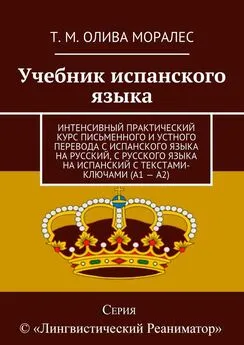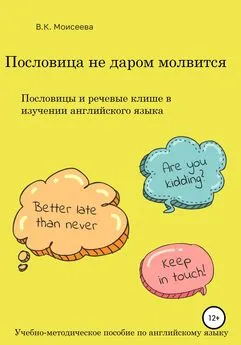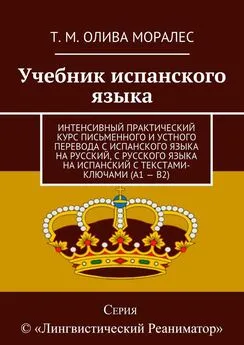Яков Рецкер - Учебное пособие по переводу с английского языка на русский
- Название:Учебное пособие по переводу с английского языка на русский
- Автор:
- Жанр:
- Издательство:неизвестно
- Год:1981
- Город:Москва
- ISBN:нет данных
- Рейтинг:
- Избранное:Добавить в избранное
-
Отзывы:
-
Ваша оценка:
Яков Рецкер - Учебное пособие по переводу с английского языка на русский краткое содержание
Учебное пособие по переводу с английского языка на русский (III курс) содержит основные положения теории перевода, служит развитию умений и навыков перевода и реферирования общественно-политических текстов в объеме программы Госкурсов «ИН-ЯЗ». В пособие включены тренировочные задания и ключи.
Учебное пособие по переводу с английского языка на русский - читать онлайн бесплатно полную версию (весь текст целиком)
Интервал:
Закладка:
London. April 6 (By airmail). Studies made recently in Britain all point to the same conclusion: poverty is steeply on the increase and the gap between higher and lower income groups is steadily widening.
While the wealthiest 1 percent of the population have had their holdings diminished to some degree since World War II, the concentration of riches in the hands of the following 9 percent has actually increased: today three-quarters of total personal wealth is held by the richest 10 percent, while the poorest 50 percent possess literally no savings.
Prof. Peter Townsend, leading Labour theoretician on social welfare problems, estimates that those with income within the poverty range number around 3,500,000 or nearly 7 percent of the population.
The poverty range includes the long-term unemployed, old-age pensioners, the disabled, and fatherless families, but the most-pertinent statistics are of families in which the father is engaged in full-time work.
The problem of rising child poverty (600,000 children) has drawn much attention in recent years.
Those suffering in officially-defined poverty (3,5 million) are only a portion, however, of the people whose lives hover in deprivation. A study made in 1966 by the Ministry of Social Security showed that in addition to those considered as poverty-striken, there were more than twice as many whose incomes were less than $-5 above the official poverty line. This would bring the total of very poor to over 10 million, or about 20 percent of the population.
Some of the worst off are the old-age pensioner. Such social security pensions in Britain average between $6 to $12 per week which is about one-fifth of the average industrial wage.
Over half of old people live alone in miserable rooms, with incomes that cannot be stretched to cover food, rent and heat. It is estimated that nearly 40,000 old people die each winter from lack of heal.
In the British economy there is a sharply increasing tendency to push people into retirement, which is a policy of helping to finance a higher paid class in 1919 only 47 percent of men retired at 65, but in 1969 the number jumped to 70 percent.
Other studies reveal that price rises of 8 percent a year in Britain hit the poor harder than the rich. Between 1955 and 1966 prices on items bought by the poor increased by 43 percent more than prices on items bought by the rich. The price rises were highest of all, proportionately, for the pensioner.
These trends have been studied for the years of the last Labour government. Under the present Tory government the tendencies are infinitely worse. Unemployment, by deliberate policy, has gone up by around 200,000 since the Tories took office last June, and now stands at nearly 800,000: it is generally forecast to hit one million by the end of the year.
The Tory government also deliberately fosters price rises while at the same time slashing social welfare items (such as eliminating free milk in schools and increasing the price of school meals). ( Daily World, 1971)
During Parliament’s next session the Government intends introducing legislation to abolish the cat and the birching of juvenile delinquents. In particular contrast to this will be the continuance of corporal punishment in our schools. The home Secretary would do well to make provision in his Bill for the abolition of this practice.
Although many teachers abhor the use of the cane, regarding it as a medieval relic, others believe it to be the only means of maintaining discipline.
Does the cane secure obedience from schoolchildren? Maybe, but teachers must constantly use it to display authority. In consequence he gains a reputation as a martinet and is unable to get the best from his pupils.
Moreover, its use suggests a convenient method of ensuring order by force, and not by explanation of right and wrong. Exclusive use of the cane lends to encourage anti-social behaviour. The most caned boy in my school was regarded as a hero and many of us sought to emulate him.
Psychologists claim great harm is done to the sensitive child’s mind by corporal punishment. They contend it retards development and fosters emotions of hate and hostility.
* Why, then, must we allow corporal punishment to continue in our schools? The Soviet Union China, Czechoslovakia, Holland, and, oddly enough, Bavaria, have dispensed with it. Why don’t we? ( Daily Worker, 1947)
Настоящее задание является необязательным Прежде чем приступить к его выполнению, рекомендуется ознакомиться с вопросом по статье «Доктрина Монро» в Большой Советской Энциклопедии или в любой монографии по истории США.
Is the Monroe Doctrine outdated? Not by a long sight. It can not possibly be regarded as dead. Has it been put in the hands of an Inter-American Committee? Or docs it have the pristine vigor with which President James Monroe challenged the threat of banded European powers to recapture the colonies that had revolted against Spain?
In 1825, President Monroe told the monarchs of the Holy Alliance that “we should consider any attempt on their part to extend their system to any portion of this hemisphere as dangerous to our peace and safety.”
The Doctrine worked. With the blessing of the British fleet. And when Napoleon III set up archduke Maximilian as emperor of Меxicо during our Civil War, it worked again, this tune supported by a fifty thousand army of observation moved to the Mexican border, as soon as the war ended.
President Cleveland vigorously invoked the Monroe Doctrine in 1895 against Britain in a dispute over the boundaries between British Guiana and Venezuela, and the British consented to place all the disputed territory under arbitration. At this tune Cleveland wrote that the Doctrine “cannot become obsolete while our Republic endures”. Perhaps not — but it did change. Still its importance has been as great as that of any principle in America.
Originally the United States did not object, in theory, when European nations resorted to debt-collecting by force against defaulting Latin American slates. But it did not fail to grasp the danger of such expedition. The Caribbean became recognized as a particularly sensitive area and President Theodore Roosevelt in 1901 produced a variant on the doctrine which became known as the Roosevelt (or Caribbean) corollary.
Flagrant cases of chronic wrongdoing or governmental impotence, said Roosevelt, “may ultimately require intervention by some civilized nation,” and in the Western hemisphere the adherence to the Monroe Doctrine “may force the United States, however reluctantly … to the exercise of an international police power.” The power was exercised in a number of Caribbean nations — Cuba (where it was provided for by the treaty of 1903), Santo Domingo, Haiti and Nicaragua among them.
The idea of the United States as international policeman was, of course, not popular in Latin America, and President Franklin D. Roosevelt, dedicating the nation “to the policy of good neighbor,” moved rapidly toward the renunciation of “armed intervention.”
So the Americans moved by degrees toward common measure for defense and mutual assistance. In 1939, when war broke out in Europe, the Act of Panama set up a neutral zone on the seas (sometimes called the Pan-American security zone, but more commonly “chastity belt”).
Measures for defense against the Axis powers were concerted (with some feet dragging) and the destroyers-for-bases deal with Britain was billed as a measure for hemispheric protection. With the war’s end, the hemisphere moved to a treaty of mutual defense and establishment of the Organization of American States. These provide for consultation and joint action. There has been rather more consultation than action.
Feeling against intervention, joint or single is strong in Latin America, as well as fear of the Yankie “Colossus of the North”. Some are afraid lest it should apply the Monroe Doctrine independent of and even opposing the Charter of the United Nations ( New York Herald Tribune, 1963)
Глава четвертая
ГРАММАТИЧЕСКИЕ ОСНОВЫ ПЕРЕВОДА
ПЕРЕВОД КОНСТРУКЦИЙ, НЕ ИМЕЮЩИХ ПРЯМОГО СООТВЕТСТВИЯ В РУССКОМ ЯЗЫКЕ
Перевод абсолютных конструкций. Перевод каузативных (побудительных) конструкций. Перевод сравнительных оборотов с формальным значением равенства и неравенства. Членение и объединение предложений при переводе.
§ 40. Перевод абсолютных конструкций. Чтобы правильно перевести абсолютную конструкцию, нужно прежде всего уметь распознать ее в тексте. Под «конструкцией» мы имеем в виду все предложение вместе с абсолютным оборотом. Поскольку абсолютный оборот является второстепенным распространенным членом предложения с внутренней предикацией, т.е. с отношениями между членами оборота, близкими к отношениям между подлежащим и сказуемым; вернее, между субъектом и предикатом, однако без глагола в личной форме, то этот оборот легко спутать с обычным второстепенным членом (чаще всего — с дополнением).
The firemen had to pull down the barn, the sheds, the stacks of dry wood being a highly combustible material.
Отделенный запятой абсолютный оборот содержит субъект the stacks и предикат being a highly combustible material, и неопытный переводчик мог бы принять этот оборот за третий член перечисления и перевести так: Пожарные вынуждены были разрушить сарай, пристройки и штабеля сухих дров, этот легко воспламеняющийся материал, что, конечно, было бы ошибочно. «Разрушать дрова» не пришлось, stacks of dry wood не является третьим дополнением: последний член перечисления обычно присоединяется союзом and, который в данном случае отсутствует. Это служит формальным показателем абсолютной конструкции, но решающим является, смысловой критерий. Разумеется, причастие (being a highly combustible material) здесь имеет, не атрибутивную, а предикативную функцию: не именно эти дрова, которые являются легко воспламеняющимся материалом, а дрова — легко воспламеняющийся материал (дрова вообще). Абсолютный оборот употреблен в причинной функции. Поэтому правильный перевод предложения:
Читать дальшеИнтервал:
Закладка:








